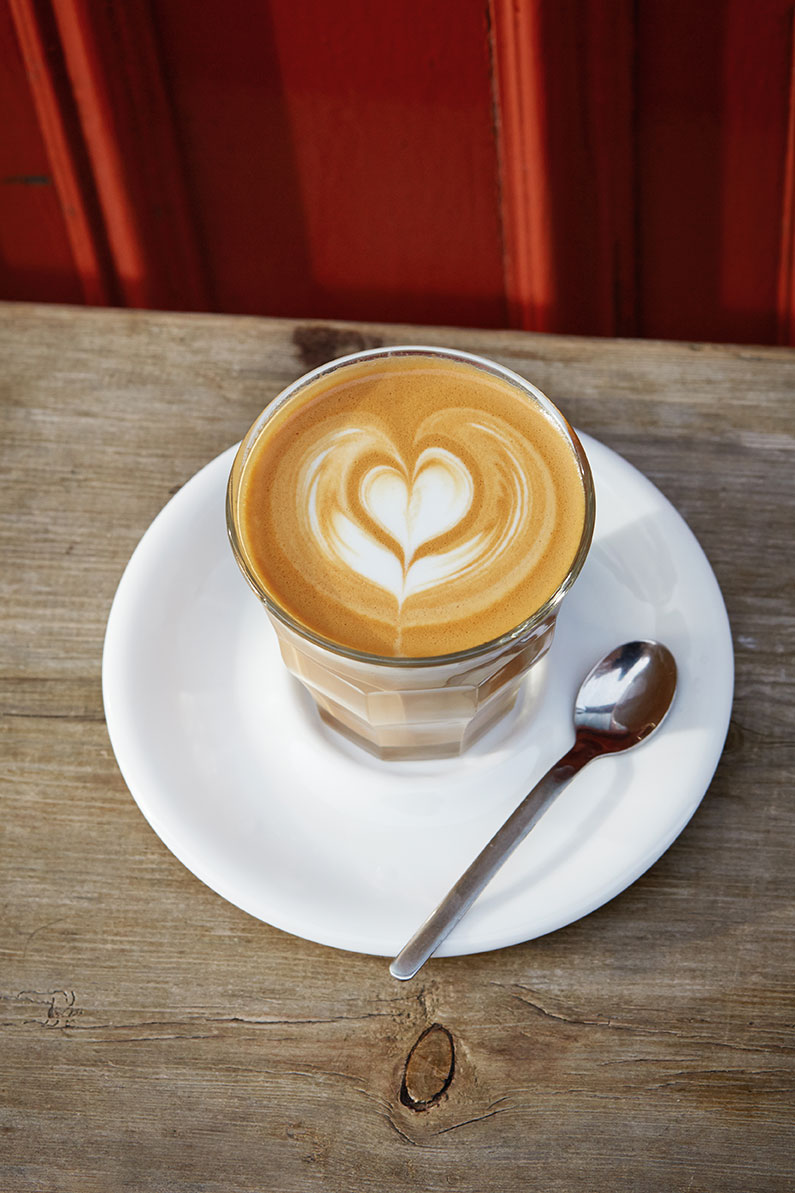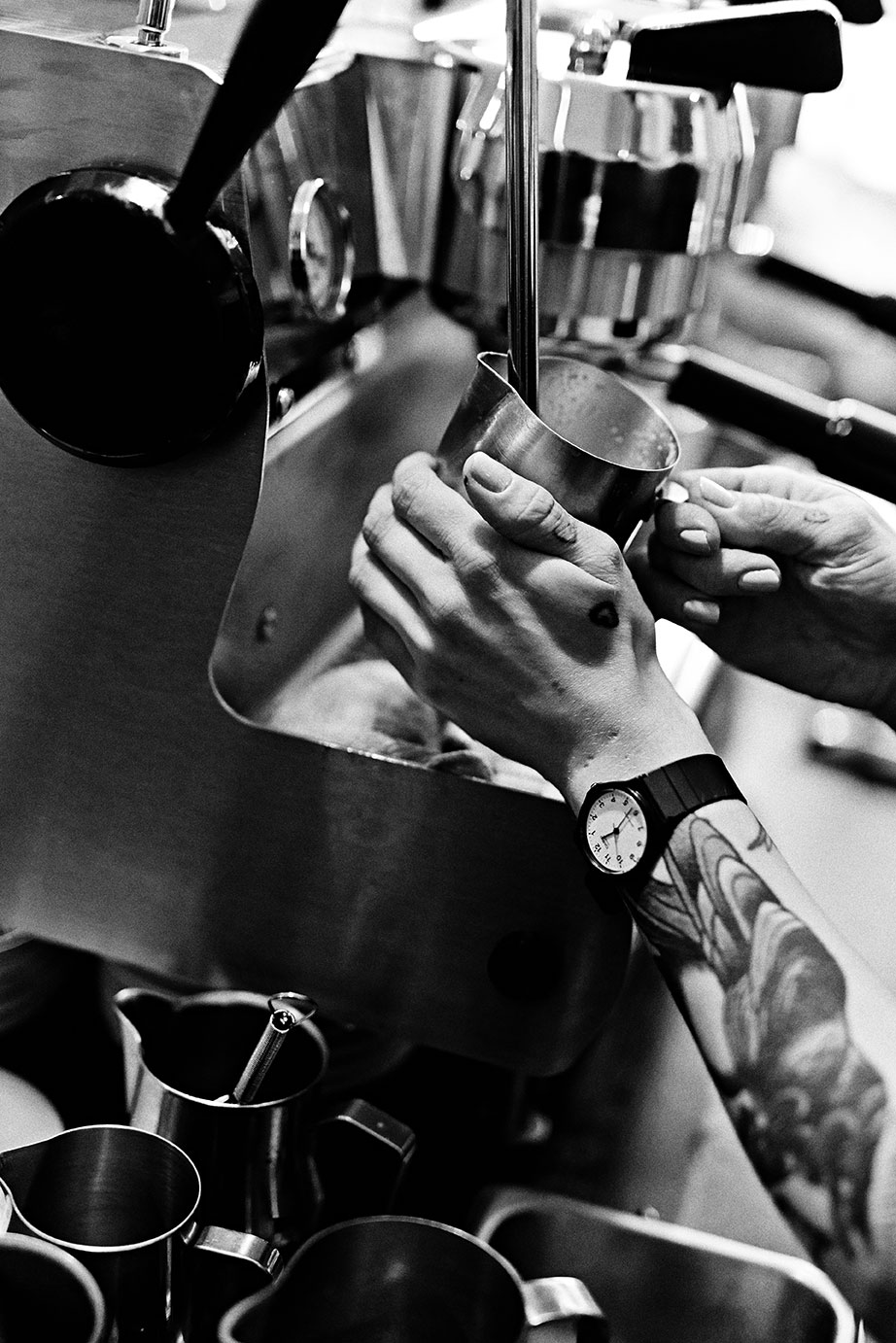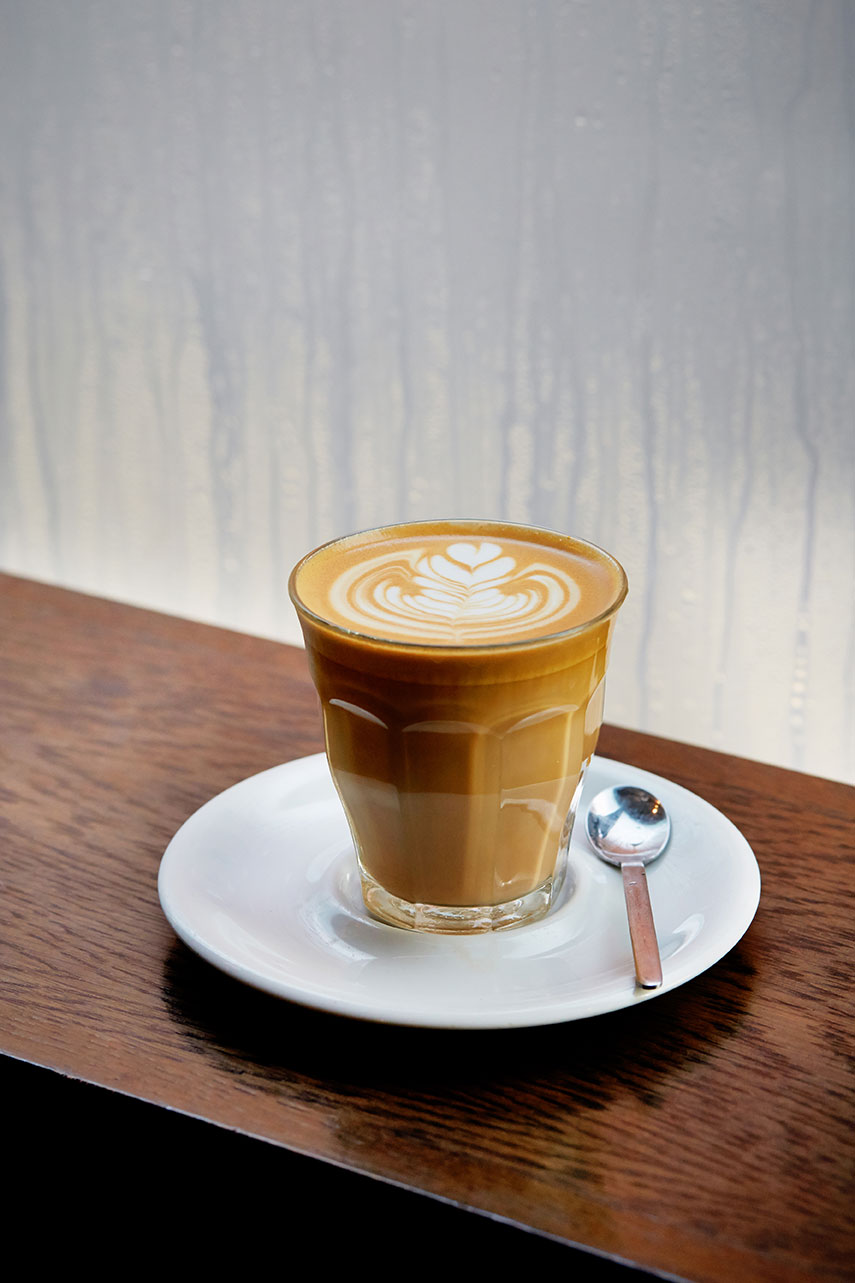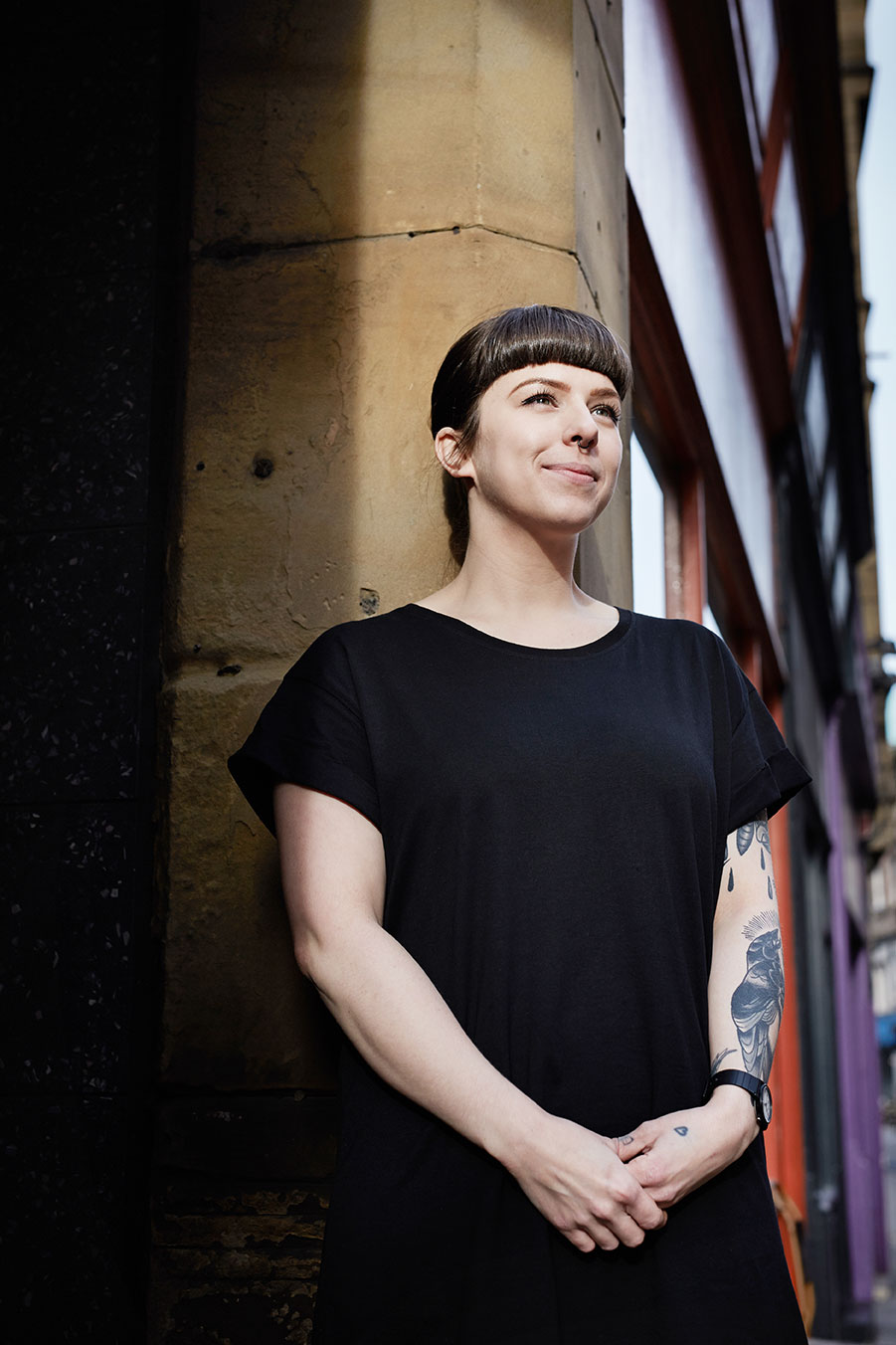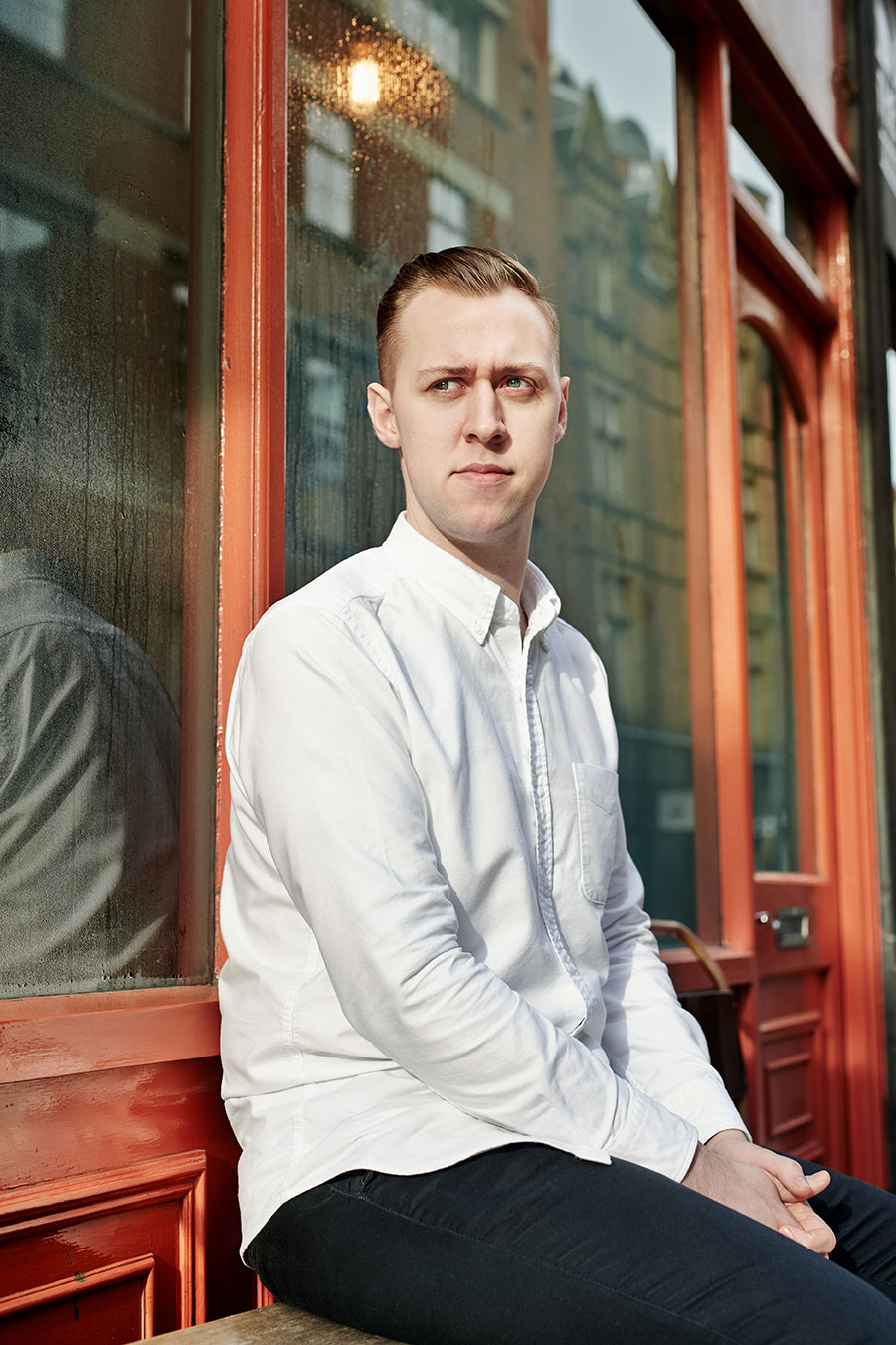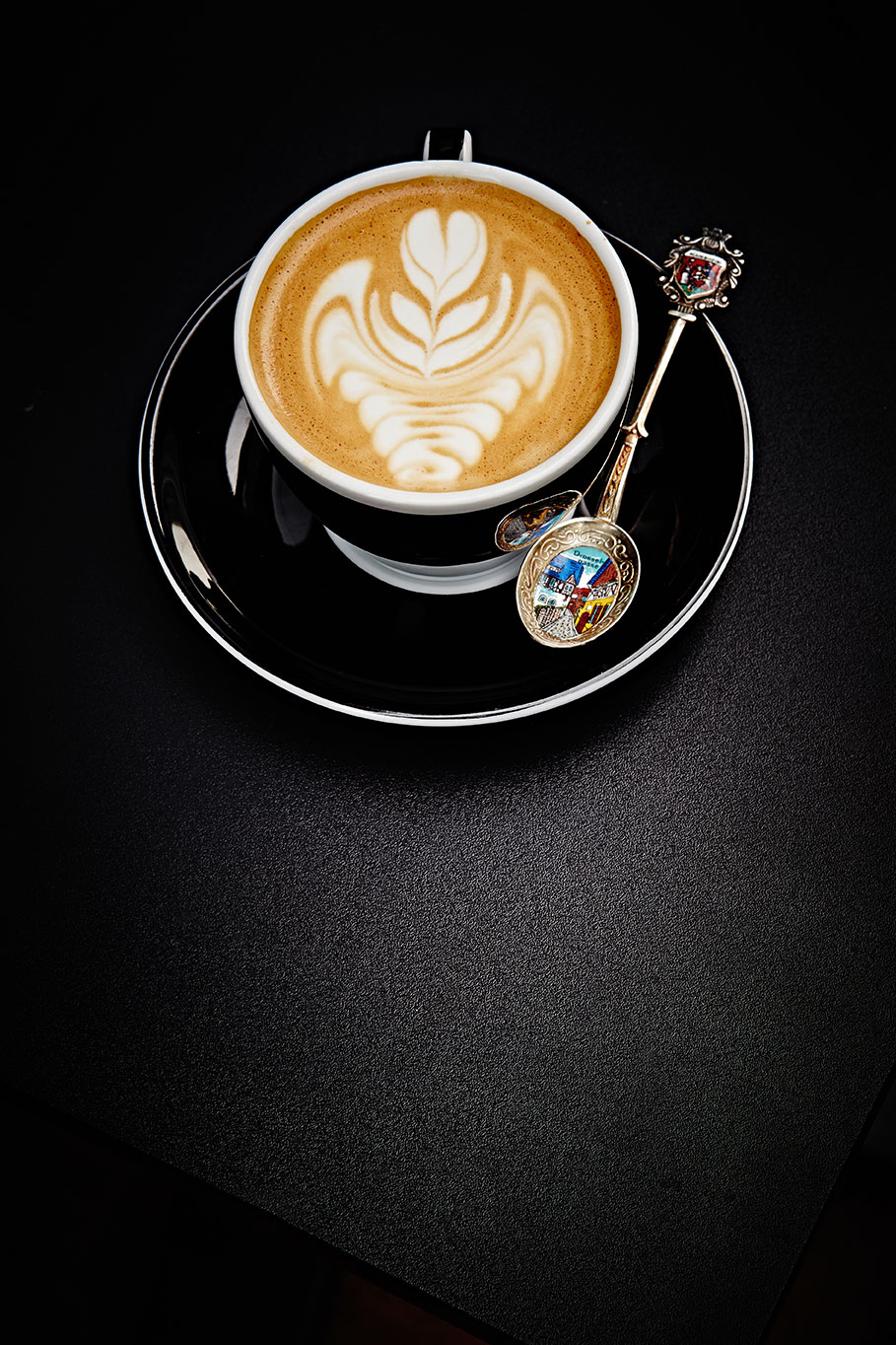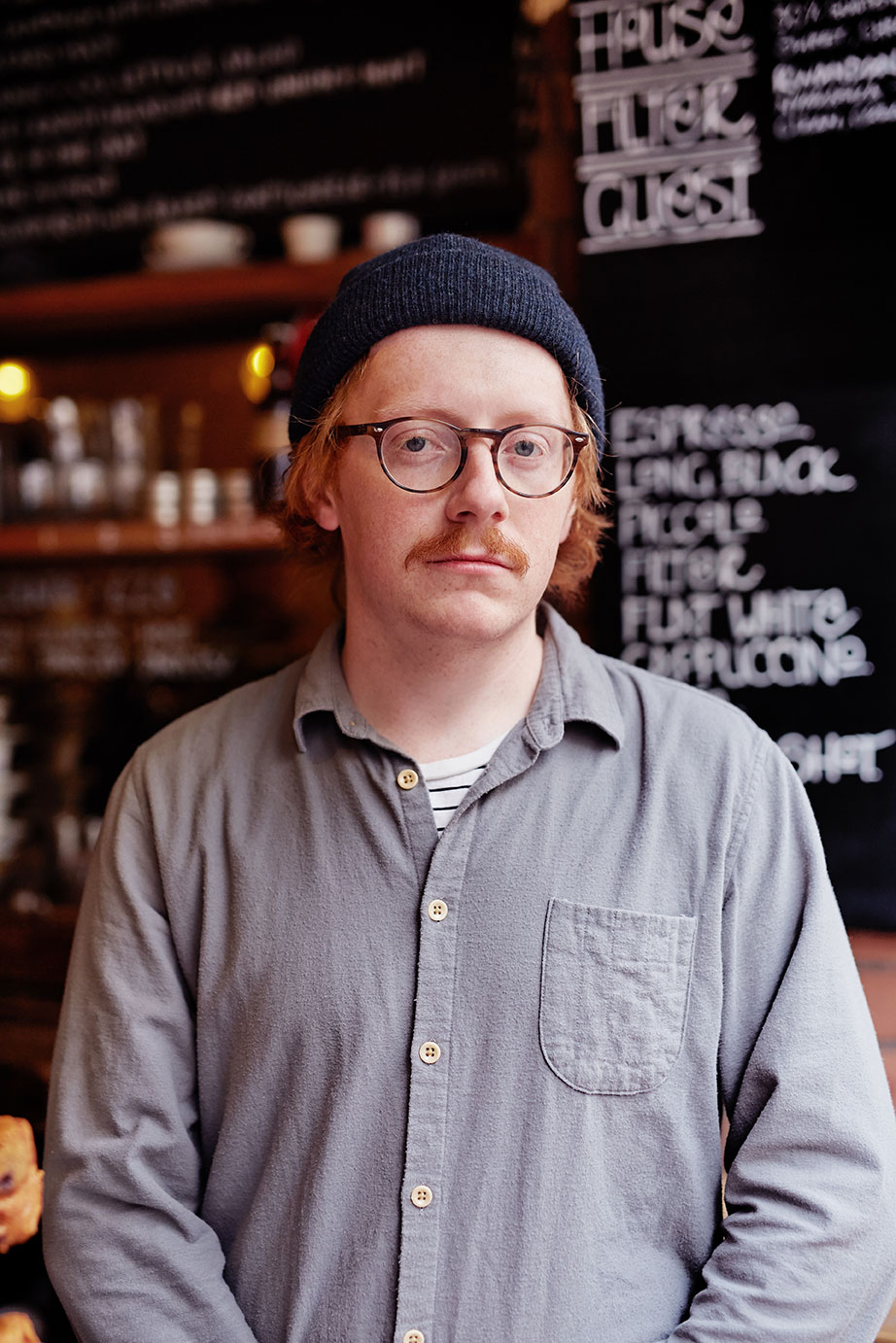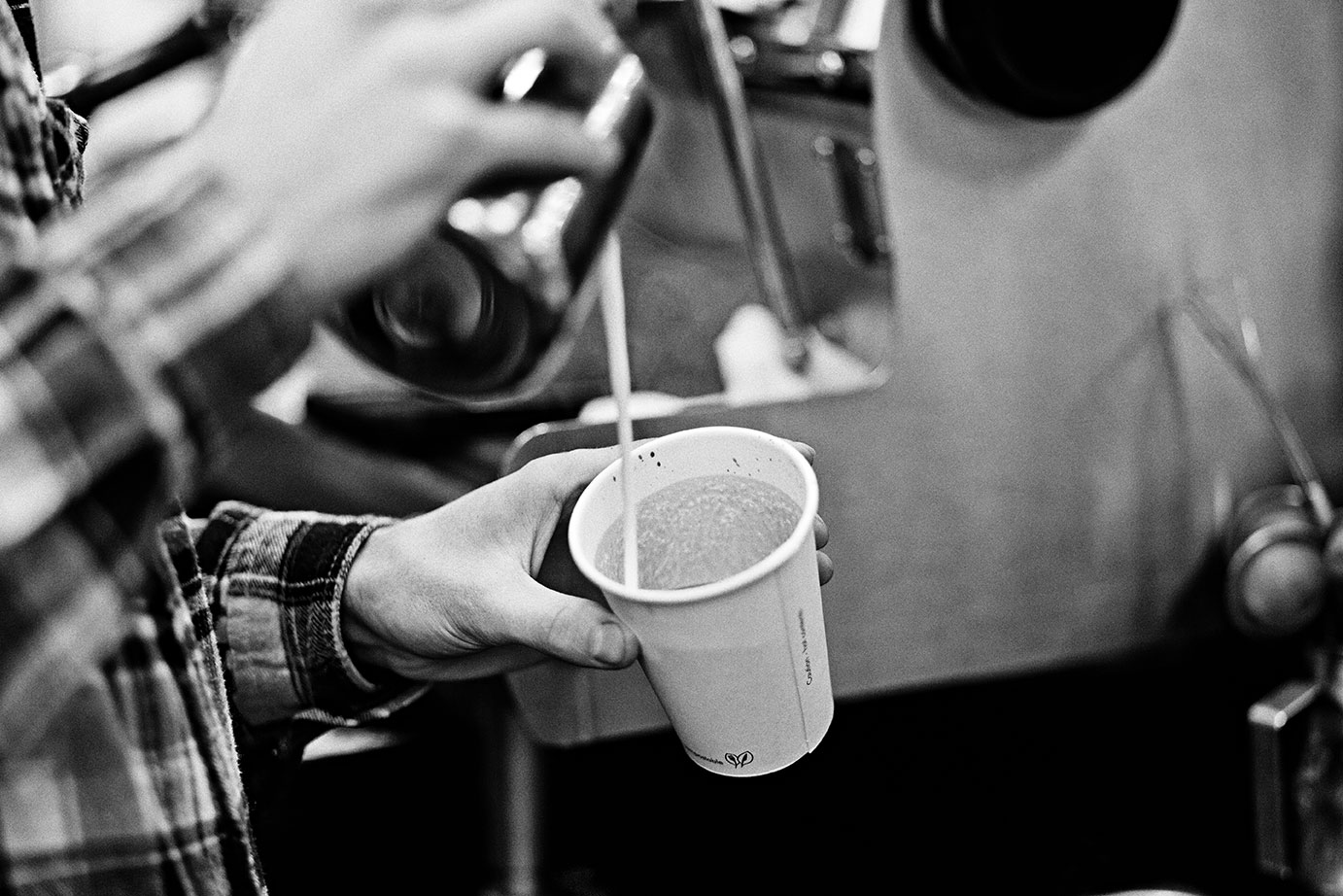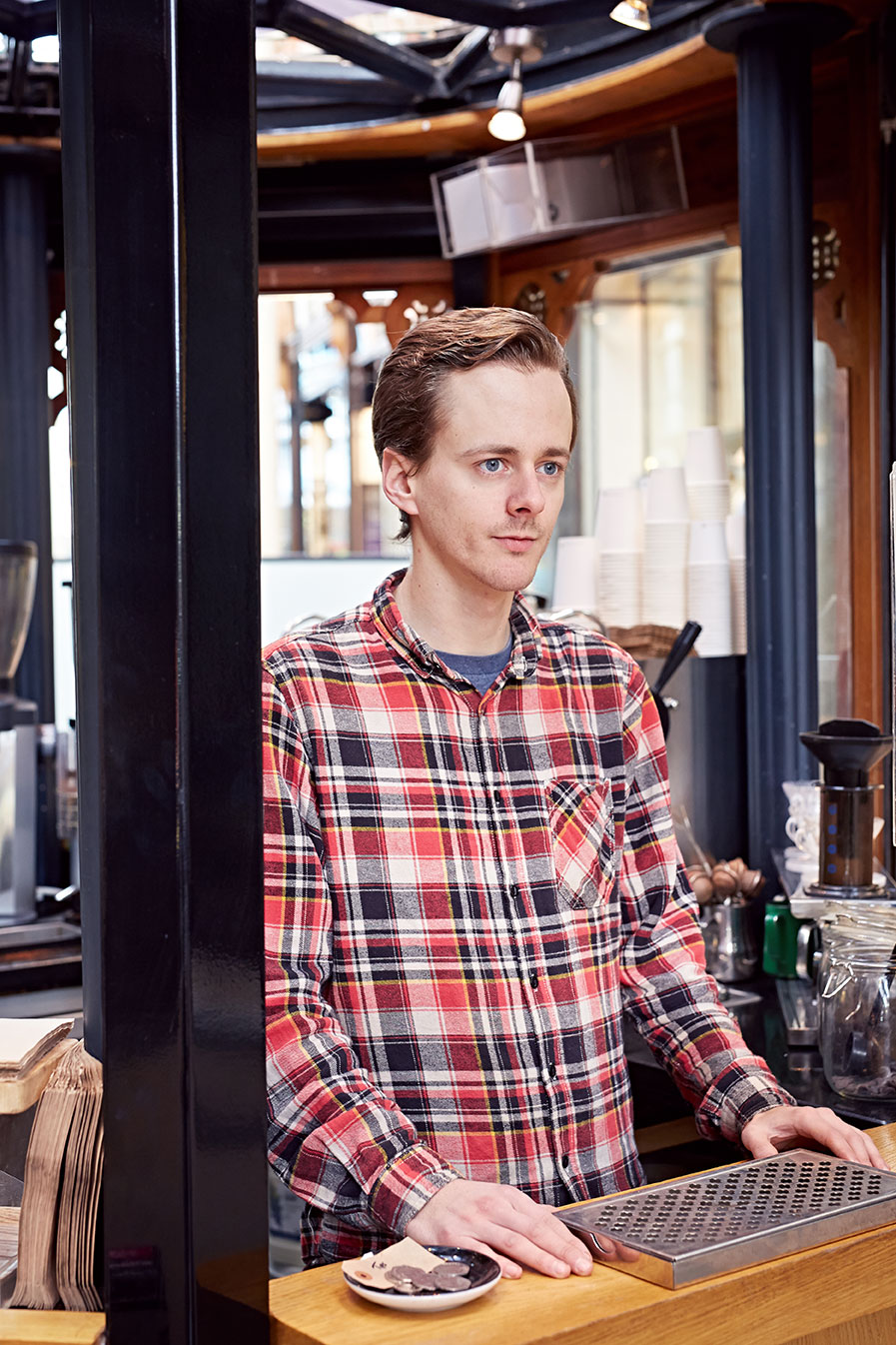Article
Latte Art as Art
Words by Aaron MeskinPhotography by Justin Slee
Can a cup of coffee be art? Surely not all coffee is art. Just consider some of those terrible and generic cups of joe you’ve had at roadside stops. But might a skilfully prepared cup of carefully roasted heirloom Yirgacheffe count as a work of art?
I recently had a cup of coffee at La Cabra in Aarhus (inverted AeroPress method) which tempted me to answer in the affirmative. However, most philosophers who have considered the status of food and drink as art have tended to be sceptical. Much of that scepticism stems from a focus on the alleged aesthetic incapacity of odours and tastes. Aquinas, in his Summa Theologica, famously claimed that sight and sound are the senses mostly associated with beauty and that ‘we do not speak of beautiful tastes and smells’.[i] More recently, the philosopher Roger Scruton has argued, in his well-respected book on the philosophy of architecture, that the senses of taste and smell do not provide full-fledged aesthetic pleasure because they lack the intellectual elements that are associated with vision and hearing.[ii] Another source of scepticism stems from the fact that most art is representational in some broad sense—it has content or is about something. And most food and drink, one might think, isn’t about anything—it just is (and is consumed).
There is a lot to say in response to these sceptical thoughts—art shouldn’t only be understood in terms of the aesthetic (see Duchamp’s Fountain), the domain of the aesthetic shouldn’t be limited to vision and hearing (odours are not uncommonly described as beautiful, and we use other aesthetic terms to describe flavours), it is possible for food to represent (many birthday cakes do so), and in any case not all art is representational in even the broadest sense (consider, for example, what is called ‘absolute music’). Nevertheless, despite my aforementioned temptation, I am not yet convinced that unadorned cups of coffee—no matter how good they are—are works of art. On the other hand, it seems to me that a good case for the possibility of coffee art can be made by pointing to the visual aspects of latte art. If the patterns of milk foam on the top of some well-made espresso based drinks are art, then it seems that they are art largely in virtue of their visual and representational qualities. We need not worry (at least for now) about taste and smell. Consider, for example, the visual and representational qualities of the latte art in these three photographs recently taken at cafes in Leeds.
So can latte art be art? I don’t think that’s quite the right question to ask since anything – or just about anything—can be art. After all, if Duchamp could turn a urinal and a bicycle wheel into art, and Leeds’ own Damian Hirst could make art out of a tiger shark and some formaldehyde, then it is hard to see what would preclude a bit of milk foam from being turned into art. In fact, there are some very special examples of latte art—most notably the kitsch 3-D latte art by Japanese barista Kazuki Yamamato—which seem to have a very good claim to art status even if they are not, to my mind at least, very good art. (Cute milk foam pandas and polar bears are not my thing.)
Let’s put aside the exceptional cases for now and focus on some more ordinary ones. Is the latte art that we find in our local coffee shops art? And let’s focus on our best independent coffee shops. In Leeds we have some superb independent places—the photos in this exhibition are from Laynes Espresso, Mrs. Atha’s and Opposite Café-Victoria Quarter. We’ll concentrate on free pouring rather than the stencil-based work that one finds at some high street chains. Is there an art form of latte art? We should not assume latte art is art just because of the presence of the term ‘art’. Rubber ducks are not ducks. Fake flowers aren’t flowers. And even if latte art is art in some sense or other, it might not be art in the sense in which we are most interested. There are arts, or so I have read, of football scouting, wicket keeping and motorcycle maintenance. ‘Art’ in this sense—a sense which stems from the Greek word ‘techne’ and the Latin word ‘ars’—means ‘craft’ or ‘learned skill’. There is, without a question, a craft—an art—of making latte art. As Rosy (Laynes Espresso) says very clearly:
I think it’s definitely a skill, and I class skilled operations as a form of art, like writing, calligraphy and typography in graphic design. You cannot just jump in there and do it right, you have got to learn the basics …It takes a hell of a lot of mastering, it does not just happen…the amount of times people ask ‘oh what machine does that pattern’ and you try to explain that you just wiggle a jug…you have to have some kind of control…
The baristas in these photographs are experienced craftspeople; they’ve all been baristas for at least five years. They know what they’re doing—carefully manipulating milk foam with just the right texture onto crema-covered espresso—and they’ve taken the time to learn how to do it well.
But the question remains—is latte art a full-fledged art? That is, is it more than a skill or craft? One reason one might be sceptical of the art status of latte art is that it disappears so quickly. In the first place, coffee foam disappears on its own rather rapidly. Justin Slee, the photographer who worked on this photo-essay, spoke with me about this challenge in photographing latte art. But, more often, it disappears with our help. We drink it! If art is the sort of thing that is designed to stand the test of time, then the evanescence of latte art would seem to count against its art status. There is no good argument here against latte art’s art status. Some art is designed to stand the test of time. Other art (consider Jean Tinguely’s self-destroying sculpture or various improvisational performances) is not designed to last. And although it might be rare to consume art, there are plenty of other cases in which artworks (or parts of artworks) are designed for ingestion—Rikrit Tiravanija’s curries and Felix Gonzalez-Torres’ candy spills come to mind.
So is latte art really art? I like to think that it is an emerging popular art form (as, for example, photography was in the nineteenth century), and it seems to me that Justin Slee’s fabulous photographs do a great deal to bring out the artistic side of pouring milk foam. More specifically, Justin’s photographs capture the way in which these coffee artists harness technology to creatively represent and add beauty to our world—much like photographers do themselves. In Justin’s pictures, at least, these talented baristas are clearly portrayed as artists.
Leaving aside the art question for a moment, let’s consider the significance of latte art. How does it contribute to the experience of your cup of coffee? Does it make it any better? The baristas I spoke with were divided on this. Scott (Mrs. Atha’s) suggests it contributes a great deal to the coffee experience:
I think it does quite a lot… I mean the first thing you see is what it looks like. I think people say you eat food with yours eyes to start with, so you have already made a conception as to how it’s going to taste. I think with good latte art, you can tell that you are going to get something better than just sort of a Starbucks or Costa kinda’ thing…. You are going to get something that someone’s taking a bit more pride and care in and something a lot more individual and skill-oriented.
But Adam (Opposite Café) isn’t convinced:
I actually do not think it does really. All the hard work comes before finishing it off with a rosette or something. I think latte art should be more like a stamp of quality with no extra effect on the drink…. The most important thing is making sure the drink tastes nice. If you are doing a latte, the main effort goes into making sure you are pulling the espresso right, making sure you are steaming the milk at the right temperature, and getting the right texture; finishing it with a heart or something is just basically a stamp of approval.
It seems that latte art can make a difference to us. Neither taste nor even flavour experiences are all we care about when it comes to a cup of coffee. Some people like their coffee Fairtrade and this is not an unreasonable preference. Latte art surely affects the visual experience of sighted drinkers of coffee, and it does not seem reasonable to criticize someone for preferring a visually appealing flat white to one which lacks visual appeal (all other things being equal). After all, many chefs work at making their food attractive; although this is not the be all and end all of dining, the beauty of a plate of food or a cup of coffee can play a significant role in our overall experience of it. Furthermore, it seems possible—although I know of no research directly on the question—that latte art could affect how we taste the coffee beneath it. A very recent article in the scientific journal Flavour reports on a study which suggests that the colour of a mug in which a coffee is served in can affect the way it is judged.[iii] Coffee served in a white mug was rated as more intense and less sweet than coffee served in blue or transparent mugs. This research is not, in fact, that surprising—it follows on earlier research which shows that plate colour and the interaction of plate colour and plate shape can affect the reported flavour experience of various foods.[iv] If this is right, then it is possible that latte art itself could have a subtle effect on perceived coffee flavour. So if latte art is an art, it could be an art that really matters!
[i] Summa Theologica 1a2ae.27.1.ad 3.
[ii] Scruton, R. (1979) The Aesthetics of Architecture, Princeton NJ: Princeton University Press.
[iii] Van Doorn, G.H., Wuillemin, D. and Spence, C. (2014) ‘Does the colour of the mug influence the taste of the coffee?’ Flavour 3: 10.
[iv] Stewart P.C., Goss E. (2013) ‘Plate shape and colour interact to influence taste and quality judgments,’ Flavour 2: 27.
